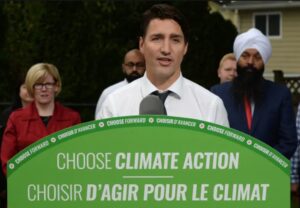

Canadians took to the polls late last year, an election that was won by Justin Trudeau Leader of the Liberal Party. During, the polls the Liberals won 184 seats hence allowing them to form the next government. Harper’s conservatives came in second with 99 seats and become the official opposition party. The New Democratic Party garnered 44 seats.
Many of the Canadian voters were in support of parties that have more energy-saving and climate change policies. Gasoline prices have been on the rise over the years, with subsequent increases in the inflation rates, many Canadians are looking for relief based on carbon credits and energy-saving measures.
While Trudeau’s Liberal Party won the most seats in Parliament, they lost the majority. This poses some challenges as they seek to implement various policies on their campaign agenda. During the elections, the liberal party made various promises to solve the climate change problem in Canada.
They promised:
If the policies are well executed, it would be a big plus for homeowners who choose to build and maintain energy-efficient homes. Energy savings measures will make it easier for you to replace your roof in Ottawa as you now have more money to take care of renovations.
According to Efficiency Canada, it was estimated that in 2016 Canada had the fourth largest per capita of carbon emissions in the world. Overall, Canada was ranked 9th for overall emissions. It is with this in mind that the party that comes with better climate control policies tends to win more voters.
Some companies focused on renewable energy that will benefit from the Liberal party focus on clean energy include SDTC and SD Tech Fund. The Sustainable Development Technology Canada (SDTC) composes of 269 clean technology projects with a total value of $2.5 billion. Most of its funding is from the private sector and so it will be interesting to see whether they will be an increase in public funding for the organization.
Trudeau has pledged to make serious investments in the clean energy sector by supporting clean energy-efficient projects. The government also seeks to look into producing more renewable energy from sources like wind or solar. He also pledged to reverse cuts to government science budgets and to set up a massive $2 billion fund to promote various clean energy technologies. The message from the public was very clear when they cast their votes, “we need change in Canada’s energy landscape”.
This website uses cookies.